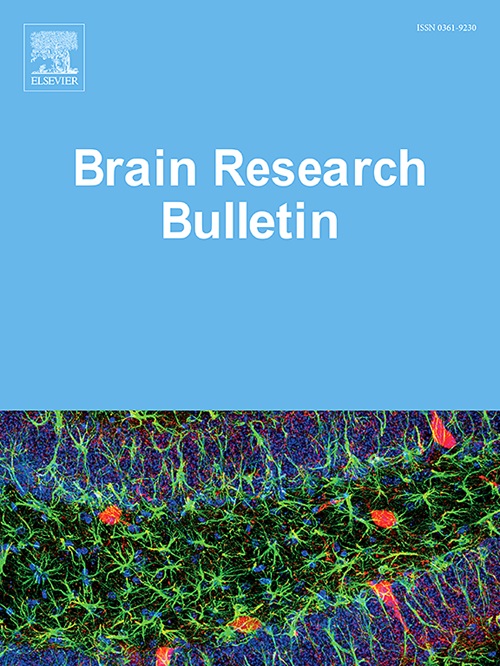Neurological function is restored post-ischemic stroke in zebrafish, with aging exerting a deleterious effect on its pathology
IF 3.5
3区 医学
Q2 NEUROSCIENCES
引用次数: 0
Abstract
Ischemic stroke (IS) is a pathological condition characterized by the cessation of blood flow due to factors such as thrombosis, inflicting severe damage to the cranial nervous system and resulting in numerous disabilities including memory impairments and hemiplegia. Despite the critical nature of this condition, therapeutic options remain limited, with a pressing challenge being the development of treatments aimed at restoring neurological function. In this study, we leveraged zebrafish, renowned for their exceptional regenerative capabilities, to analyze the pathology of IS and the subsequent recovery process. We induced photothrombosis in the telencephalon utilizing rose bengal and conducted a temporal investigation of changes in cerebral vascular function and learning ability. Our findings revealed that blood flow in young zebrafish was restored approximately 7 days post-IS induction (dpi), with brain function recuperating by 14 dpi. Furthermore, we observed an escalation in the expression of the neural stem marker gene at 3dpi, followed by an upregulation of the differentiated neuron marker at 7 and 14dpi. In the aged IS model, symptoms were exacerbated. While cerebral blood flow was restored in 7 days, similar to young zebrafish, the recovery of learning ability was protracted in aged fish. Moreover, an upregulation of the differentiated neuron marker seen in young fish was not observed in the aged model. Collectively, our analysis of the zebrafish IS model and its comparison with existing rodent models may lay the groundwork for novel IS treatment strategies. Furthermore, the zebrafish IS model may prove beneficial for analyzing the impact of aging on the pathology of IS and the recovery process.
求助全文
约1分钟内获得全文
求助全文
来源期刊

Brain Research Bulletin
医学-神经科学
CiteScore
6.90
自引率
2.60%
发文量
253
审稿时长
67 days
期刊介绍:
The Brain Research Bulletin (BRB) aims to publish novel work that advances our knowledge of molecular and cellular mechanisms that underlie neural network properties associated with behavior, cognition and other brain functions during neurodevelopment and in the adult. Although clinical research is out of the Journal''s scope, the BRB also aims to publish translation research that provides insight into biological mechanisms and processes associated with neurodegeneration mechanisms, neurological diseases and neuropsychiatric disorders. The Journal is especially interested in research using novel methodologies, such as optogenetics, multielectrode array recordings and life imaging in wild-type and genetically-modified animal models, with the goal to advance our understanding of how neurons, glia and networks function in vivo.
 求助内容:
求助内容: 应助结果提醒方式:
应助结果提醒方式:


